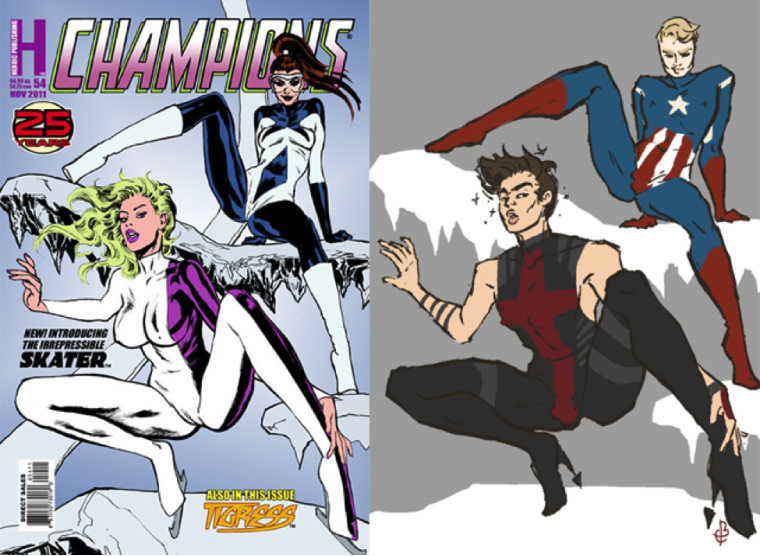
Photo from thehawkeyeinitiative.com
How far is too far when it comes to showing skin in entertainment? Fan service is blatant nudity or sexual content for the sake of pleasing fans. In anime, comics, movies and television shows, fan service has been a main selling point. But lately, it seems as if there is just too much of it.
Many would argue that fan service is symbolic. While there are examples of symbolic fan service that does work, most of the time it is a simple excuse for the disturbing amount of nudity in today’s media. Daenerys of Game of Thrones letting her clothes burn off as she tries to obtain her dragons is a good example of a symbolic moment, as it’s meant to represent her shedding the past.
Comic books are well known for nudity and the sexual objectification of women, since they are typically aimed at men. Backbreaking poses to show off women’s assets and scandalous uniforms say a lot about the comic book industry: it doesn’t care for women.
The Hawkeye Initiative makes fun of these dumb and impossible poses. The goal was to raise awareness by drawing a popular male comic book hero, Hawkeye, in the exact same poses as the female heroes. The project itself has gotten pretty big and any artist is free to submit his or her own examples. Fan service in comic books probably isn’t going to stop anytime soon, but it’s better to make voices heard now than later.
Anime is extremely well known for fan service. Ask any non-anime watcher to describe anime to you. The answer you’ll get is something along the lines of, “Impossible hair, big boobs, and muscular guys.” They’re half right. Anime used to have such a large male audience, especially with the most popular series being shounen — action series aimed at boys. While the fan service is abundant in series like Naruto, and One Piece, people have begun to expect it less from newer series.
Kill la Kill is an anime that was massively loved and hated this past season. While the story was original and the animation was phenomenal, the main portion of the show featured the two main characters nearly naked. Their sailor uniforms transformed into super-powered versions, though the new versions were super skimpy. There were complaints about the fan service, as the bouncing boobs and butt shots were all too common for the nudity to be brushed off as symbolic. Even towards the end of the show, Satsuki, a main character, was shown completely nude as her mother molested her. While there are fans that still argue the symbolism, it’s still unsettling.
Is showing butts and boobs all right as long as the naughty bits are covered up? The reason why fan service is so frowned upon is because it really only features women. Objectifying women for viewership is gross, though it will never stop if the primary audience is male. Kill la Kill showed silly naked men to try to balance the nudity, but it was small in comparison to the amount of skin Ryuko and Satsuki showed.
Even Daenerys’ nudity goes unexcused for me. The writers, of course, didn’t have any nude symbolism for the male characters. It’s got to be women. People want to see T&A. The Media will continue to push its boundaries farther and farther, as television restrictions get weaker and weaker.
Do you think most fanservice is symbolic? Or maybe you agree? Or, on another note, are you freaking out about this week’s One Piece chapter? Comment below or e-mail me at dahrae@terpmail.umd.edu.



